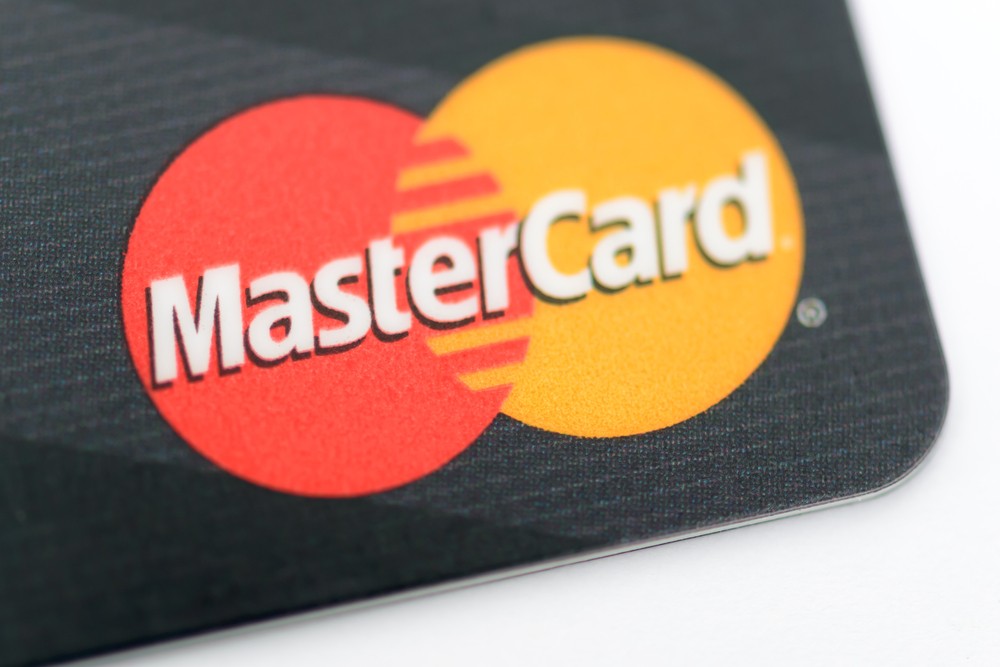Here’s a topic for debate. Would you be willing to get an RFID microchip implant under your skin if it would allow you to make payments at a store or vending machine, enter a secure building or log into your computer? That’s our lead story as we look at the  latest in AI, chatbots and biometrics payments.
latest in AI, chatbots and biometrics payments.
Wisconsin tech firm Three Square Market hopes its employees will agree to get rice grain sized RFID chips implanted beneath the skin on their hand. CEO Todd Westby says the chip will let them use a gesture to buy food, log into their computer or do other simple functions. Critics, including Rick Oglesby of Payments Group LLC, say biometrics could accomplish all the same functions and more without the need for a chip implant.
 Biometrics are also powering Alibaba’s cashless and cashier-less Tao Bao restaurant experiment in China. In Europe, TSB Bank will become the first financial institution to enable Iris scan account access. According to research by Visa and Populas, two-thirds of European consumers are excited about the possibility of using biometrics for secure payments. In the US, research by Viewpost shows 80% of consumers are open to using biometrics payments including retina scans, fingerprinting, voice scans and facial recognition.
Biometrics are also powering Alibaba’s cashless and cashier-less Tao Bao restaurant experiment in China. In Europe, TSB Bank will become the first financial institution to enable Iris scan account access. According to research by Visa and Populas, two-thirds of European consumers are excited about the possibility of using biometrics for secure payments. In the US, research by Viewpost shows 80% of consumers are open to using biometrics payments including retina scans, fingerprinting, voice scans and facial recognition.
MasterCard is sponsoring artificial intelligence and frictionless payments research as it moves in the direction of APIs over plastic. In China, Alibaba is also one of the largest investors in artificial intelligence as subsidiary Alipay looks for payments opportunities globally. Also in China, Swatch has partnered with 11 banks to introduce Swatch Pay – payments by smart watch.
 While 25% of US consumers are using chatbots daily, 44% of millennials are embracing the new technology. Research from 3Cinteractive shows 77% of consumers will buy more after a positive interaction with chatbots. Forbes looks at 10 ways Enterprise AI and chatbots are influencing the future of business.
While 25% of US consumers are using chatbots daily, 44% of millennials are embracing the new technology. Research from 3Cinteractive shows 77% of consumers will buy more after a positive interaction with chatbots. Forbes looks at 10 ways Enterprise AI and chatbots are influencing the future of business.
Square’s obsession with machine learning enables it to process 3 million transactions daily and only have to review 2000 of those thanks to AI. Artificial intelligence could even improve debt collection, eliminating a bleak history of harassment, shoddy record-keeping and poor debt collection results.
US firm to implant employees with RFID chips
 An American company is inviting employees to get RFID chips that can be used to buy food in the office break room implanted in their hands.
An American company is inviting employees to get RFID chips that can be used to buy food in the office break room implanted in their hands.
Three Square Market, which makes self-service micro markets for office break rooms, says it expects over 50 staffers to volunteer for the free chips, which it is working with Sweden’s BioHax on.
The employees will get chipped at a ‘chip party’ on 1 August, after which they will not only be able to make contactless purchases at the firm’s micro market but also open doors and log into their computers. Via finextra.com
Are Subdermal NFC Payments Over the ‘Internet of Us’ the Next Big Thing?
 A Wisconsin supplier of kiosks for employee break rooms is getting national attention in the wake of its announcement that it plans to implant radio-frequency identification microchips in the hands of volunteer employees Aug. 1, chips the company says will support payments.
A Wisconsin supplier of kiosks for employee break rooms is getting national attention in the wake of its announcement that it plans to implant radio-frequency identification microchips in the hands of volunteer employees Aug. 1, chips the company says will support payments.
Three Square Market, based in River Falls in the far western part of the state, says the chips, about the size of a grain of rice, will be implanted between the thumb and forefinger in a procedure that takes only seconds.
“Many emerging payment technologies struggle to gain consumer adoption due to fear and habitual momentum,” Rick Oglesby, president of Mesa, Ariz.-based AZ Payments Group LLC, says by email. “The implant introduces whole new levels of both fear and friction, while at the same time there are a multitude of technologies that can provide a similar or even superior customer experience without implants. Payments won’t be and should not be the driver behind implanted chip adoption.” Via digitaltransactions.net
Financial ID Briefing: Biometrics Power Alibaba’s Cashless Cafe
![]() Facial recognition, QR codes, and mobile tech combined to transform the retail experience at an experimental cafe run by Alibaba at the Taobao Maker Festival. Alibaba’s Tao Cafe replaced cashiers with an automated biometric experience, allowing customers to make purchases through the Taobao app, which links products scanned to users’ payment accounts via facial recognition.
Facial recognition, QR codes, and mobile tech combined to transform the retail experience at an experimental cafe run by Alibaba at the Taobao Maker Festival. Alibaba’s Tao Cafe replaced cashiers with an automated biometric experience, allowing customers to make purchases through the Taobao app, which links products scanned to users’ payment accounts via facial recognition.
While the cashierless process seems a tad byzantine, it fits into an ongoing trend toward greater automation in retail as enabled by biometrics. Smart vending machines, home shopping via voice command, and even naked payments at fast food restaurants—these are just some of the ways biometrics are enabling ID-focused self-serve in stores.
Iris biometrics is continuing to become increasingly common as a consumer authentication method thanks to the technology’s inclusion on Samsung’s latest flagship smartphones. And with the mainstreaming of iris scanning comes support from financial institutions. TSB Bank is ahead of the game in this sense, as it is positioned to become the first bank in Europe to allow for iris-based mobile app access control. Via findbiometrics.com
How Biometrics Will Impact Payments
 Biometrics and authentication are two of the most discussed topics in the world of mobile payments. This interest is due to technology like Apple’s Touch ID. According to research commissioned by Visa and Populas in 2016, two-thirds of Europeans are ready to use biometrics for secure payments. Business Insider predicts 99% of U.S. smartphones will be biometrics-enabled by 2021.
Biometrics and authentication are two of the most discussed topics in the world of mobile payments. This interest is due to technology like Apple’s Touch ID. According to research commissioned by Visa and Populas in 2016, two-thirds of Europeans are ready to use biometrics for secure payments. Business Insider predicts 99% of U.S. smartphones will be biometrics-enabled by 2021.
In the search for greater security, this technology has raised the excitement level about what’s possible for stopping hackers in their tracks. “Biometric identification and verification has created a great deal of excitement in the payments space. It offers an opportunity to streamline and improve the customer experience,” said Jonathan Vaux, Executive Director of Innovation Partnerships at Visa Europe. “Our research shows that biometrics is increasingly recognised as a trusted form of authentication as people become more familiar with using these capabilities on their devices.”
Yet, challenges remain. One of these is the potential for a false positive or false negative during the authentication process. Unlike a PIN, biometrics is not a binary measurement. Instead, it’s based on the probability of a match. By linking it to other factors, such as the device, geolocation technologies, or another authentication method, this challenge can be overcome. Via nasdaq.com
US consumers prefer biometric payments
 A survey of people in the US has found that biometric payment options are increasingly seen as preferable to traditional methods such as cash.
A survey of people in the US has found that biometric payment options are increasingly seen as preferable to traditional methods such as cash.
In the survey by payments firm Viewpost, an overwhelming majority of respondents, 80 percent, are looking forward to future payment technologies and are in favor of tools like sensor fingerprinting, facial recognition, retinal scanning and voice control.
Fifty percent of the 1,000 US consumers surveyed said fingerprint technology will be used for authentication to pay and receive payments over the next decade. The survey found 35 percent of respondents see facial recognition as a vital authentication technology for making payments within the next ten years, while 32 percent of consumers say they trust the technology for securing e-payments. Via planetbiometrics.com
Consumers Are Ready to Embrace ‘Futuristic’ Payment Tech
 As many as 80 percent of U.S. residents support frictionless payment methods and technologies, suggests a survey of 1,000 consumers Viewpost published this week.
As many as 80 percent of U.S. residents support frictionless payment methods and technologies, suggests a survey of 1,000 consumers Viewpost published this week.
“New technologies in the payment arena continue to bring more digitization and simplification, great security, and collaboration, as well as notification and faster availability of funds,” said Pat McMonagle, director of payment operations at Viewpost.
The advent of faster payments has led to an increase in security and controls to reduce the probability of payment fraud, McMonagle said. Virtual payment transactions use a unique ID, so it’s easy to identify and track a transaction. All required reporting is captured as the virtual card is created, so reconciliation is not a problem. Virtual card settings can limit transactions to those that are compliant with company policy. Via crmbuyer.com
B2B API: APIs Rise Above Plastic Payment Cards
 To address customers’ needs as commerce goes digital, financial services giant Mastercard is weighing the benefits of APIs over plastic after several decades of heavy investment in the latter.
To address customers’ needs as commerce goes digital, financial services giant Mastercard is weighing the benefits of APIs over plastic after several decades of heavy investment in the latter.
If recent activity is any indication, Mastercard is clearly making APIs a big part of its future. Late last year, the company launched Mastercard Developers, a platform geared toward developers that offers access to a wide range of APIs. The APIs are developed at eight of Mastercard’s research and development labs around the world, and allow company partners to test new applications and technologies such as virtual reality and Internet of Things (IoT)-enabled devices.
To gain a deeper understanding of how Mastercard intends to tap APIs to meet the company’s goals, PYMNTS recently caught up with Oran Cummins, Mastercard’s senior vice president of APIs. Cummins discussed how the company is moving beyond plastic credit cards to offer consumers new ways to pay for services, and how the company’s API investment strategy fits into its broader roadmap of expanding global financial inclusion. Via pymnts.com
Alipay Puts Financial Muscle Behind AI Development
 Remember just a few days ago, when we were talking about how artificial intelligence (AI) was changing the face of mobile payments? How it meant new options, new potential pitfalls, and so on? It turns out that wasn’t just a vague platitude, as new reports suggest that Alipay parent company Alibaba is one of the largest private investors in AI development around, and is already looking to the concept to solve a lot of problems.
Remember just a few days ago, when we were talking about how artificial intelligence (AI) was changing the face of mobile payments? How it meant new options, new potential pitfalls, and so on? It turns out that wasn’t just a vague platitude, as new reports suggest that Alipay parent company Alibaba is one of the largest private investors in AI development around, and is already looking to the concept to solve a lot of problems.
More specifically, the funding seems to have been largely routed through Ant Financial, where AI is being regarded as a “key driver” for business. It represents the means to address problems on several fronts, from loans to insurance and beyond.
As noted by Ant Financial vice president and chief data scientist Qi Yuan, “At Ant Financial, we say AI solves problems. In finance, the main problems are credit and risk management.” Since Ant Financial recently launched its own AI-powered image recognition system geared toward vehicle insurance claims investigators—and since exterior damage claims represent almost two out of three (60 percent) of the 45 million claims filed annually—it’s easy to see why the company’s backing it so enthusiastically.
Better yet, the research has already borne fruit; where formerly, investigations took six minutes on average, that’s now down to about six seconds in a growing number of cases. That’s improved reaction time, lowered costs, and, down side, it may ultimately cost people jobs. Via paymentweek.com
Contactless Payment Watches: Swatch Pay
 Swatch is partnering with 11 leading banks in China to offer ‘Swatch Pay,’ a new contactless payment service. Swatch Pay uses four new NFC smartwatches that can be activated by being placed on a specialized in-store platform and after download an app, which only takes a matter of minutes. Following this process, consumers are free to use the wearables to start making payments where contactless participating payment terminals are offered.
Swatch is partnering with 11 leading banks in China to offer ‘Swatch Pay,’ a new contactless payment service. Swatch Pay uses four new NFC smartwatches that can be activated by being placed on a specialized in-store platform and after download an app, which only takes a matter of minutes. Following this process, consumers are free to use the wearables to start making payments where contactless participating payment terminals are offered.
To mark the launch of Swatch Pay in China, Swatch is offering rewards to early adopters of the contactless payment technology.
While there are many wearables that have been launched to help consumers make touchless payments, these Swatch models boast stylish, bright colors and affordable designs that have the potential to appeal to consumers of all ages. Via trendhunter.com
Chatbots gain steam with consumers, especially millennials
 One quarter of U.S. consumers are using a chatbot on a daily basis, and that figure spikes to 40 percent among the millennial generation. More importantly for retailers, 77 percent of consumers surveyed by 3Cinteractive Corp., for its Chatbot Consumer Report, said positive interaction with a chatbot makes them buy more.
One quarter of U.S. consumers are using a chatbot on a daily basis, and that figure spikes to 40 percent among the millennial generation. More importantly for retailers, 77 percent of consumers surveyed by 3Cinteractive Corp., for its Chatbot Consumer Report, said positive interaction with a chatbot makes them buy more.
The online chatbot survey polled approximately 500 U.S. households. Yet, while chatbots are increasingly being embraced by consumers, the survey noted there is still a long way to go before the technology makes its mark on impacting businesses.
“When consumers were asked why they thought chatbots were not valuable, 71 percent said the chatbot could not answer their question or help them. As the technology advances, businesses will need to expand the capabilities of their chatbots to keep up with growing consumer expectations,” according to a press release on the survey. Via mobilepaymentstoday.com
10 Ways Enterprise Chatbot Solutions and AI Are Changing the Workplace
 I spent a few days with futurists at IBM back in 2014, and I’ll never forget the words of futurist Faith Popcorn: the robots are taking over. I didn’t know in that moment if I was scared, or inspired.
I spent a few days with futurists at IBM back in 2014, and I’ll never forget the words of futurist Faith Popcorn: the robots are taking over. I didn’t know in that moment if I was scared, or inspired.
Chatbots were initially implemented to help out with the odd customer care conversation; now, they’re completely changing the way enterprises operate both internally and externally. Instead of being used as a simple tool, they’re currently part of a much bigger strategy, allowing enterprises to cut expenses, automate business processes, and empower teams.
They’re becoming an integral part of most companies’ various operations, giving them time to focus on revenue-generating activities. Here’s how chatbots – and companies such as ChattyPeople – are changing the workplace Via forbes.com
Square’s Machine Learning Obsession is Paying Off
 Investors are excited about the potential for artificial intelligence to enable fully autonomous cars and smarter voice assistants. Until then, the technology is already having a meaningful impact on the more mundane way that companies go about doing business.
Investors are excited about the potential for artificial intelligence to enable fully autonomous cars and smarter voice assistants. Until then, the technology is already having a meaningful impact on the more mundane way that companies go about doing business.
In a note to clients Friday, Mizuho analyst Thomas McCrohan highlighted how payments companies are making good use of machine learning, a form of artificial intelligence. Square, he wrote, is leading the pack, as the company’s goal “is to approach every business challenge through the lens of machine learning.”
He points out that while the company ends up processing about 3 million transactions per day, it only has to manually review fewer than 2,000 of them for fraud, thanks to artificial intelligence. Via barrons.com
Can AI make debt collection smarter and easier?
 Over the past decade, as banks have effectively outsourced debt collection to third parties, this corner of the financial world has slid into an abyss of harassing phone calls, shoddy record keeping and wrongful collections.
Over the past decade, as banks have effectively outsourced debt collection to third parties, this corner of the financial world has slid into an abyss of harassing phone calls, shoddy record keeping and wrongful collections.
This is reflected in the latest data from the Consumer Financial Protection Bureau’s complaint database. Since the database was opened to the public in June 2012, Americans have aired more grievances about collections than about any other aspect of their financial lives. As of June, the CFPB had received 316,810 complaints about debt collection. The most common objection? “Continued attempts to collect debt not owed,” cited by 39% of filers. (The second-largest topic of complaints is mortgages, at 272,153.)
The timing is good, though. Artificial intelligence, chatbots and self-service technology have reached a point where they can provide a much-needed makeover to the collections process. Such technologies can help lenders learn to reach out to people at times and in channels that are more conducive to a conversation and repayment. They can help engage borrowers in a negotiation about their debt that can result in far higher repayments than repeated threatening phone calls. Via americanbanker.com








LET’S CONNECT